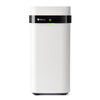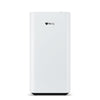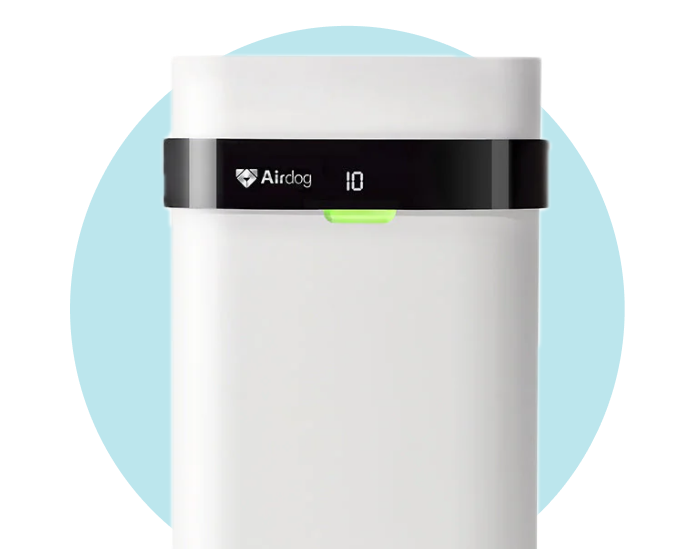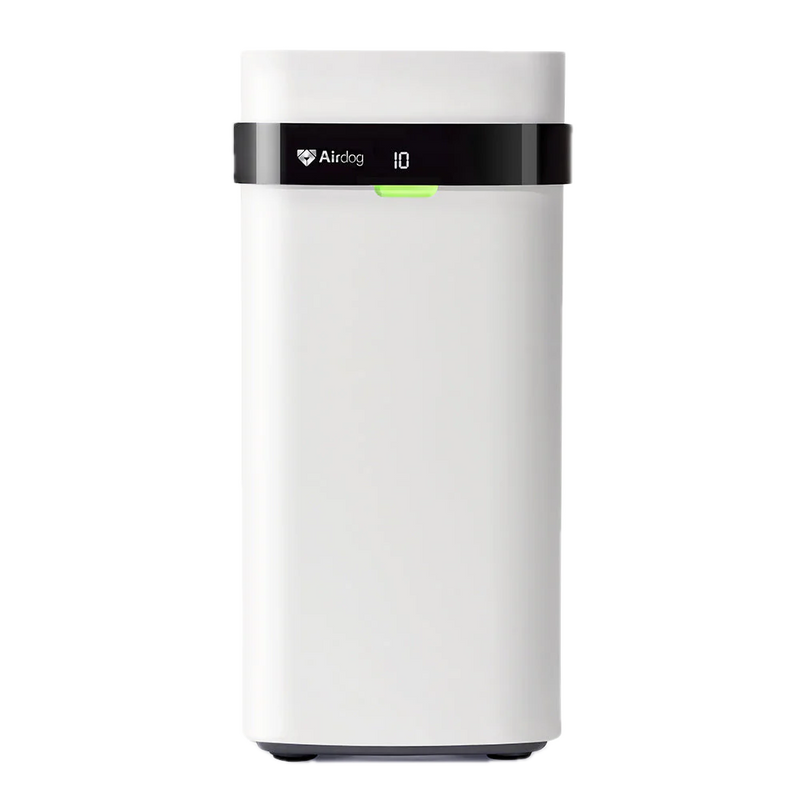For adults navigating life from their mid-thirties to over sixty-five, indoor air quality is more than a comfort issue—it’s a health consideration. Dust, pollen, pet dander, smoke, and microscopic pollutants can accumulate indoors, impacting respiratory health, sleep, and overall well-being.
Addressing indoor air quality doesn’t just make your home feel cleaner—it directly supports your quality of life. Combining air purifiers with natural ventilation can create a healthier, more comfortable environment.
How Air Purifiers Work
Air purifiers remove indoor pollutants using a combination of technologies, each designed to target different contaminants.
HEPA Filtration
-
Captures 99.97% of particles as small as 0.3 microns.
-
Effective against dust, pollen, pet dander, and other allergens.
Activated Carbon
-
Absorbs gases, odors, smoke, and VOCs (volatile organic compounds).
-
Maintains a fresh indoor environment while removing chemical pollutants.
UV-C Light & Ionization (Ozone-Free)
-
Neutralizes germs, bacteria, and viruses.
-
Some advanced systems capture ultrafine particles that standard filters can miss.
These technologies work together to reduce both particulate matter and chemical pollutants, ensuring cleaner indoor air.
Using an Air Purifier with the Window Open
Natural ventilation is an important complement to air purifiers, but it comes with considerations.
Benefits of Open Windows
-
Introduces fresh air to dilute indoor pollutants.
-
Reduces stuffiness and balances indoor humidity.
Challenges
-
Outdoor pollutants, including pollen, vehicle emissions, and industrial particulates, can enter.
-
Air purifiers may need to work harder to maintain clean air.
Tips for Using an Air Purifier with the Window Open
-
Monitor outdoor air quality (AQI) to decide the best times to open windows.
-
Keep windows closed during high pollen or pollution seasons, relying on the air purifier instead.
-
Open windows strategically during cleaner hours, like early mornings or late evenings.
Studies show that air purifiers can reduce particulate matter by up to 60% in just 20 minutes even with windows open, proving they can complement natural ventilation effectively.
Strategic Placement for Maximum Efficiency
Placement affects performance, especially when using an air purifier with a window open.
Airflow Considerations
-
Avoid placing purifiers directly next to open windows.
-
Position in central areas for even distribution.
-
Elevate units when possible, as many pollutants rise.
Optimizing for Specific Needs
-
Allergies: Near sources of allergens (pet areas, pollen entry points), away from windows.
-
Odors: Near kitchens or bathrooms while maintaining distance from open windows.
-
Cross Ventilation: Open windows on opposite sides to flush out stale air and reduce purifier workload.
Proper placement ensures maximum efficiency while letting you enjoy fresh air.
Health Benefits of Air Purifiers and Fresh Air
Even when windows are open, air purifiers play a crucial role in maintaining healthy indoor air.
Allergy & Asthma Relief
-
Capture pollen, dust, and pet dander, reducing allergy symptoms.
-
Improve sleep quality by keeping bedrooms free from allergens.
Protection Against Indoor and Outdoor Pollutants
-
Remove VOCs from paints, cleaning products, and furniture.
-
Lower PM2.5 levels, protecting the lungs and supporting cardiovascular health.
Balanced Approach
-
Use an air purifier when outdoor pollution is high, and open windows strategically when air quality allows.
-
This ensures the benefits of both mechanical purification and natural ventilation.
Best Practices for Maintaining Air Quality
Maintaining pristine indoor air quality necessitates a blend of strategies, including the use of air purifiers, regular maintenance, and natural ventilation. For those who prioritize their health and the well-being of their families, understanding these practices can lead to a substantially healthier living environment.
Regular Maintenance
-
Replace HEPA filters every 6–12 months; replace activated carbon filters as recommended.
-
Clean air intake and output areas to maintain efficiency.
Strategic Ventilation
-
Open windows based on AQI and weather.
-
Limit duration during high pollution or pollen counts.
Additional Measures
-
Incorporate air-purifying houseplants.
-
Maintain indoor humidity between 30–50%.
-
Reduce indoor pollution sources (smoking, harsh chemicals, excess carpets).
These practices enhance the effectiveness of an air purifier with windows open while maintaining optimal indoor air quality.
Maximizing Air Quality: A Balanced Approach
The key to healthy indoor air is finding the right balance between mechanical purification and natural ventilation. By understanding how air moves through your space and when to bring in outdoor air, you can optimize both comfort and health.
Science of Synergy
-
Recognize airflow patterns: Observe how air circulates in each room to position your air purifier for maximum efficiency while safely opening windows for fresh air.
-
Combine purification and ventilation: Use air purifiers to continuously capture indoor pollutants, dust, pollen, pet dander, VOCs, and microbes, while controlling when and how outdoor air enters.
-
Complementary technologies: HEPA filtration, activated carbon, and UV-C or ionization work together to ensure a thorough, multi-layered approach to air purification.
Customized Strategies
-
Monitor outdoor conditions: Check pollen levels, air quality indices, and pollution forecasts to determine the best times to open windows.
-
Adjust for your home: Consider lifestyle factors like pets, cooking, or cleaning when deciding purifier use and window schedules.
-
Seasonal planning: During high pollen seasons or periods of outdoor pollution, rely more on your air purifier while minimizing window time to maintain cleaner indoor air.
Airdog: Advanced Air Purification
Systems like Airdog elevate indoor air quality by capturing ultrafine particles and neutralizing microbes. Even when using an air purifier with the window open, Airdog maintains high-performance filtration, ensuring your home stays fresh, clean, and healthier for everyone.
Healthy Indoor Air, Even with Your Windows Open
Using an air purifier with a window open is not only possible—it’s effective when done strategically. While outdoor air introduces pollutants, a high-quality air purifier reduces indoor contaminants, supports respiratory health, and provides allergy relief.
By combining smart placement, scheduled ventilation, and regular maintenance, you can enjoy the benefits of fresh outdoor air without compromising indoor air quality. Advanced systems like Airdog make this balance easier, capturing ultrafine particles and microbes that standard filters may miss. The result? Cleaner, healthier, and more comfortable air throughout your home, whether windows are open or closed.





